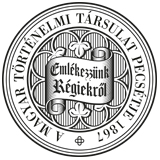Századok – 2001
TANULMÁNYOK - Tomka Béla: A német tőke Magyarországon az első világháború előtti évtizedekben.V/1053
NÉMET TŐKE MAGYARORSZÁGON AZ ELSŐ VILÁGHÁBORÚ ELŐTT 1073 ques. Elle essaie aussi de définir le volume et le dynamisme de l'importation de capital hongroise, provenante de l'Allemagne. Conernant la quantité des papiers négociables étrangers mis au marché allemand, l'étude exploite les groupes de sources principaux suivants: 1. la statistique nommée d'admission (Zulassungstatistik); 2. La statistique d'émission (Emissionstatistik) et 3. La statistique de „crochet d'effet" (Effektenstempelstatistik). Parmi les formes de l'importation de capital allemande elle prend en considération les placements de fonds effectués en forme des crédits d'état, des crédits de chemin de fer, des billets de gage, d'autres crédits publics et des investissements du capital actif bancaire et industriel. Il est remarquable, d'après les résultats que l'exportation de capital allemande en Hongrie s'augmentait beuacoup au cours des deux décennies avant la première guerre mondiale. L'Allemagne prit la première position dans le cercle des investissements de capital provenants de l'étranger, dépassant largement la France. L'Allemagne eut un rôle primordial surtout dans les années après le tournant du siècle, lorsque les effets hongrois - avant tout des billets d'état - provenant de l'Autriche et de la France, furent rapidement absorbés par le marché de capital allemand, et par conséquence elle prit possession, d'une certaine façon, du rôle de l'Auriche dans l'approvisionnement de capital de la Hongrie. L'imporation de capital fut effectuée surtout en forme des effets d'état et de chemin de fer, d'une manière similaire aijx autres pays de l'Europe de l'Est. Par contre, les investissements industriels et les autres placements se développaient à un niveau minimal. La participation forte aux chemins de fer d'intérêt locale démontre à cette époque un point principal caractéristique aux investissements allemands. GERMAN CAPITAL IN HUNGARY IN THE DECADES BEFORE WORLD WAR I by Béla Tonika (Summary) The study describes the characteristics of German-Hungarian capital transactions on the basis of the fundamental features of the German export and Hungarian import of capital in the three decades preceding World War I. It analyses the functioning of the capital market in the two countries, the institutional framework of the German export of capital (stock exchange, banks) but also the influence of the political environment. At the same time it attempts to determine the volume and dynamics of German export of capital to Hungary. In order to determine the amount of foreign shares and bonds put to the German market the study used three basic groups of sources: the so-called statistics of admission (Zulassungsstatistik), the statistics of emission (Emissionsstatistik) and the „stamping-statistics" (Effektenstempelstatistik). Among the forms of German import of capital the government loans, railway loans, mortgages and other public loans are examined as well as the investments in the form of influx of working capital into the banks and the industry. One of the most important results of the study is the statement that the export of German capital to Hungary increased constantly in the two decades preceding World War I, and was by far the first in scale, largely surpassing the amount of French investments. In this respect an especially crucial role was played by Germany in the first years of the 20th century, when the Hungarian bonds flowing out from Austria and France were quickly absorbed by the German capital market, thus assuming to a certain extent the role of Austria in supplying Hungary with capital. As in other Eastern-European countries, the import of capital took the form of state and railway bonds, the level of investments in the industry and elsewhere remaining relatively low. The dominance of German interests in the Hungarian national railways was a characterisctic form of German investments in the period under consideration.
